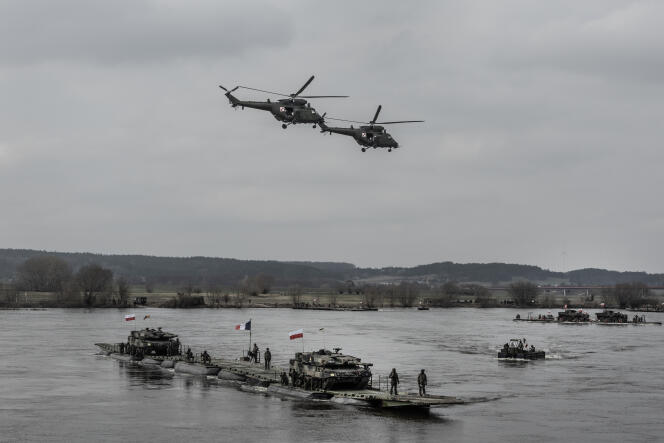


The North Atlantic Treaty Organization is no longer in hiding. After three decades of military retrenchment, following the fall of the Berlin Wall in 1989 and the break-up of the Soviet Union two years later, NATO has decided to boost its capabilities in response to Russia's "special military operation" in Ukraine and the threats made by its president, Vladimir Putin, to countries on Europe's eastern flank.
On January 24, the alliance launched Steadfast Defender 24, its largest series of military exercises in Europe since the end of the Cold War. Scheduled to last until May 31, these large-scale maneuvers bring together some 90,000 troops from 32 countries and no fewer than 1,100 armored vehicles, including 166 battle tanks. The exercises are taking place mainly on the plains of Poland and Norway, but also in Germany, the Baltic States, Romania, Finland, Slovakia, Greece and Sweden.
"This is our largest deployment since Exercise Reforger in 1988, in which 125,000 men were engaged," stated US General Randolph Staudenraus, head of operations at NATO's military command in Brunssum, Netherlands. Staudenraus came to Gdansk, Poland, on March 4 to supervise one of the two land exercises in the sequence, called Dragon 24.
Steadfast Defender 24 is also the first implementation of NATO's new defense plans, which were developed after Russia's annexation of Crimea in 2014 and adopted at the NATO summit in Vilnius in July 2023.
Hitherto reluctant to target Russia explicitly in order to avoid any escalation, NATO's military leaders no longer hesitate in their scenarios to designate Moscow as the enemy to be fought. For Dragon 24, the objective assigned to the troops was to move as quickly as possible from Western Europe to the border between Poland and Belarus, in order to prevent an enemy force from penetrating alliance territory. This is a scenario that NATO forces could face, among other threats, should Moscow attempt to seize the Suwalki Gap, the narrow corridor that links the Kaliningrad enclave to Russian territory and separates the Baltic States from Poland.
"The highest risk we face today is that of a major conflict in Europe," confirmed General Pierre Schill, chief of the general staff of the French Army, who came to observe the deployment of the 700 French soldiers and 12 Leclerc tanks involved in the Dragon 24 exercise on March 5. "Russia has built up powerful forces and is determined to use them to bring its adversaries to heel. (...) It is currently very focused on Ukraine, and it is difficult to assess its regeneration time. It could be very fast, two or three years, or slower. We need to use this time to prepare ourselves and bring things up a notch."
You have 48.13% of this article left to read. The rest is for subscribers only.
